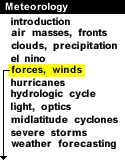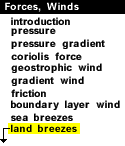
|
Since the pressure at any location is determined by the weight of the air above it, the accumulation of air at higher levels causes the pressure at levels below to increase. In the case of a developing land-breeze circulation, an area of high pressure develops over land at the surface in response to the accumulation of air at higher levels by onshore flow. Conversely, an area of surface low pressure develops over water in response to the removal of air from higher levels.
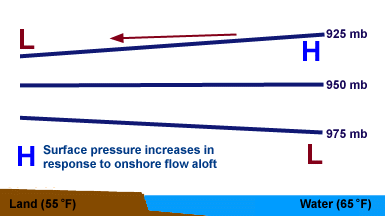
These areas of high and low pressure establish a surface pressure gradient which generates an offshore flow of air at the surface, or land breeze.
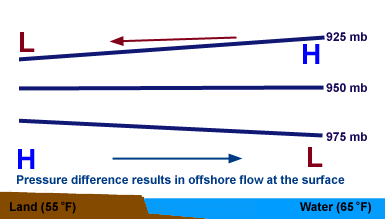
Vertical motions are induced in response to the horizontally moving air. Over water, for example, offshore flow causes air to pile up at lower levels while onshore flow removes air from higher levels. As a result, air rises up from lower levels to replace the air that is being removed aloft.
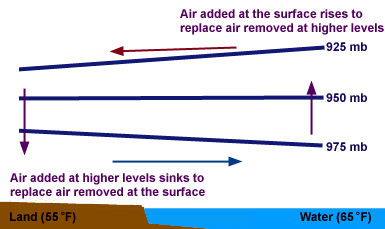
On the other hand, over land, air is accumulated at higher levels while being removed from lower levels. In response, air descends from higher levels to replace the air that is being removed from lower levels. These rising and sinking motions complete the loop that makes up the land-breeze circulation.

onshore flow aloft |
|

Hurricanes |


